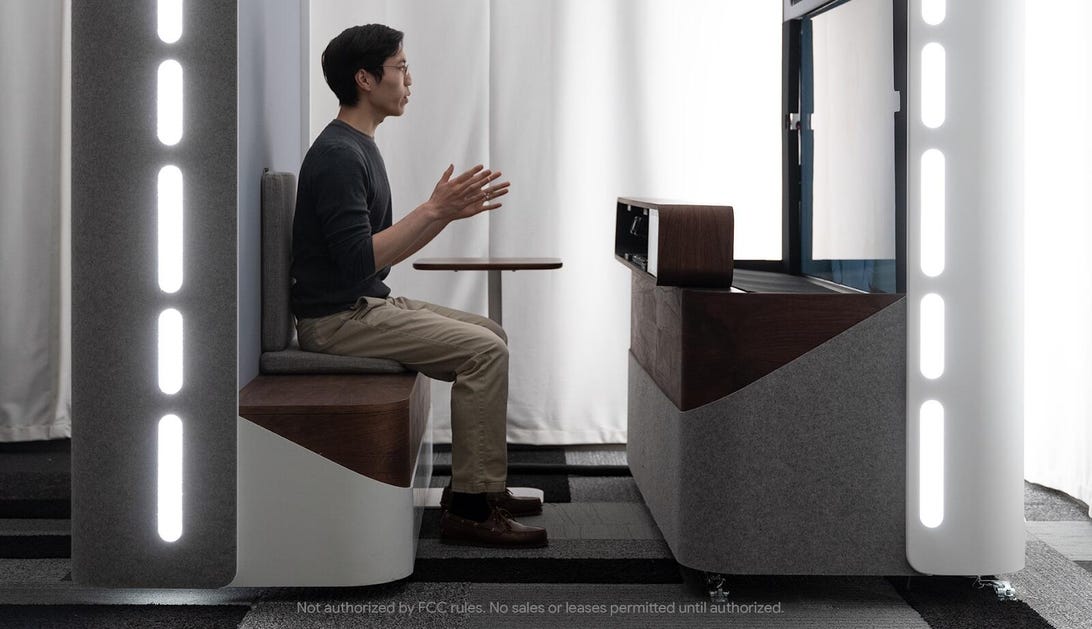
Google’s Project Starline uses a combination of hardware and software to make video chatting far more realistic.
GoogleWe’ve all become familiar with video chat platforms like Zoom and Google Meet over the past year, and the fatigue and anxiety that can come with hours of video calls, technology glitches and sitting in one place staring at all those boxes. But what if video chatting actually felt more like sitting across from a real person and talking naturally?
Google’s Project Starline, unveiled Tuesday during its Google I/O developer conference keynote, uses advanced technology to bring video calls to this next level. You sit in front of what looks like a window, and on the other side, see another person, life-size and in three dimensions. You can talk naturally, and make gestures and eye contact as you would sitting across from each other at a table.
Google’s Project Starline makes it seem like you’re talking to someone in real life through a window, instead of through video chat.
GoogleProject Starline combines software like computer vision, machine learning, spatial audio and real-time compression with hardware like a new light field display system to create more volume and depth, without the need for AR or VR glasses or headsets. This makes it feel like a person is sitting across from you, and the technology can fade away, Google executives said.
Google Meet has become a popular choice for working and socializing during the pandemic, and Google added several new features over the course of the year to make it easier for people to connect (and to compete with others like Zoom and Microsoft Teams). But Project Starline goes far above adding the ability to change your video chat background.
Back in 2010, Cisco tried out a similar though far lower-tech concept with Umi, a high-definition camera and microphone embedded into your TV for better video calls, with a price tag of $599. It was discontinued about two years later. And more recently, some apps on the market like Spatial have tried to move the virtual meeting format into virtual reality, but none have really taken off, likely in part because of the cost and comfort barriers of those headsets.
Project Starline uses computer vision, machine learning, spatial audio and real-time compression along with a new light field display system to create a 3D image of the person you’re chatting with.
GoogleProject Starline could face similar barriers in terms of consumer adoption: It requires specialized, custom-built equipment, and is currently only available in a few Google offices. The company has demoed it with health care and media partners to get early feedback, and is planning trial deployments in the business space later this year. But Google said its goal is to make Project Starline tech more affordable and accessible, and to bring some of these advancements into its existing communication tools.
More information will arrive later this year, Google said in a blog post.
























